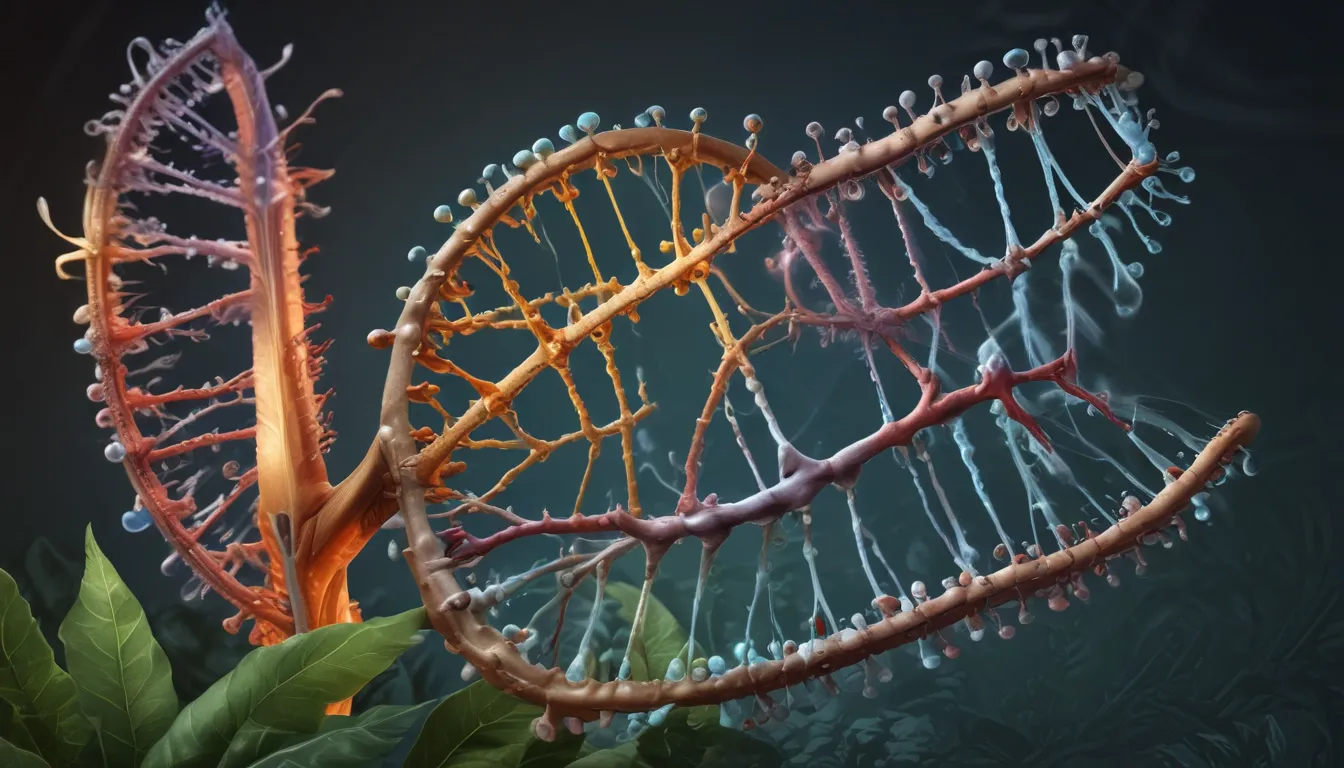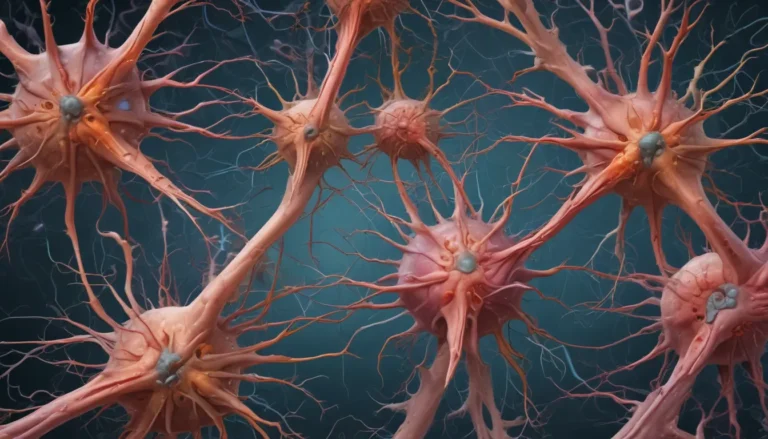A Note About Images: The images used in our articles are for illustration purposes only and may not exactly match the content. They are meant to engage readers, but the text should be relied upon for accurate information.
In the vast landscape of biology, few subjects captivate the imagination and spark excitement quite like restriction enzymes. These remarkable proteins, also known as restriction endonucleases, possess the extraordinary ability to precisely cut DNA at specific sequences, unlocking a world of possibilities for genetic research and manipulation. The discovery and utilization of restriction enzymes have propelled molecular biology into a new era, empowering scientists with the tools to unravel the mysteries encoded within our genes.
Unraveling the Wonders of Restriction Enzymes
Get ready to embark on a journey into the captivating world of restriction enzymes as we unveil 16 astonishing facts that will leave you in awe of nature’s intricate biochemical machinery. From their origins and significance to their diverse applications in research and biotechnology, prepare to be amazed by the extraordinary capabilities of these minuscule molecular scissors.
Key Insights:
- Restriction enzymes act as molecular scissors: These enzymes, akin to tiny superheroes, aid in cutting and manipulating DNA for genetic research and engineering.
- Their importance in biology: Revolutionizing the field, restriction enzymes enable DNA fingerprinting, gene therapy, and DNA sequencing, fueling advancements in genetics.
Exploring the Realm of Restriction Enzymes
1. Evolutionary Origin in Bacteria
Dating back to the 1960s, restriction enzymes were first uncovered by researchers studying bacteria. It was observed that these organisms possessed the ability to combat viral infections by cleaving the DNA of invading viruses using these enzymatic scissors.
2. Diverse Range of Identification
With over 3,000 restriction enzymes identified and characterized from various bacterial species, each enzyme possesses the unique ability to recognize and slice DNA at specific sequences, making them indispensable tools in molecular biology.
3. Varied Cutting Patterns
Restriction enzymes exhibit diverse cutting patterns, ranging from blunt ends that offer clean cuts to sticky ends that leave single-stranded overhangs facilitating DNA fragment binding.
4. Precision in Specificity
Certain restriction enzymes demonstrate high specificity, targeting particular DNA sequences with remarkable accuracy. This precision allows scientists to manipulate specific genes or DNA segments for applications like gene cloning and sequencing.
5. DNA Fingerprinting Applications
A vital component of DNA fingerprinting, restriction enzymes play a pivotal role in forensic identification and paternity testing. By slicing DNA at specific sites, distinctive patterns of DNA fragments are generated, enabling comparisons between individuals.
6. Bacterial Defense Mechanism
Integral to bacterial defense mechanisms, restriction enzymes safeguard against viral invasions. Upon viral DNA injection, these enzymes swiftly identify and sever foreign genetic material, thwarting viral replication.
7. Creation of Recombinant DNA
Playing a crucial role in the creation of recombinant DNA molecules, restriction enzymes facilitate the merging of DNA fragments from diverse sources to craft new molecules with desired traits.
8. Impact in Gene Therapy
In the realm of gene therapy, restriction enzymes aid in correcting genetic disorders by precisely inserting therapeutic genes into patient DNA, offering promising avenues for treatment.
9. Engineered for Specific Applications
Scientists have tailored restriction enzymes for specific purposes, imbuing them with enhanced stability or altered cutting patterns. These modified enzymes, dubbed engineered nucleases, broaden the applications of restriction enzymes in genetic engineering.
10. Foundational Role in DNA Sequencing
Critical to DNA sequencing techniques, restriction enzymes assist in determining the exact sequence of nucleotides in DNA molecules by cleaving them into smaller fragments for analysis.
11. Versatility in Fragment Sizes
The strategic use of restriction enzymes allows for the creation of DNA fragments of varying sizes, enabling focused study of genome regions or isolation of specific genes for further analysis.
12. Driving Force in Molecular Biology
The discovery and utilization of restriction enzymes have been transformative in the realm of molecular biology, furnishing potent tools that have advanced genetic research, biotechnology, and our comprehension of DNA.
Unleashing the Potential of Restriction Enzymes
As we delve deeper into the realm of restriction enzymes, we bear witness to their profound impact on genetic engineering, DNA research, and medical applications. From precise DNA cutting to innovative gene therapies, these enzymes continue to captivate scientists with their versatility and efficacy. With each revelation, we uncover new horizons in molecular biology, paving the way for groundbreaking discoveries that hold the promise of a brighter future.
FAQs
-
What are restriction enzymes?
Restriction enzymes are proteins that recognize specific DNA sequences and cleave the DNA at those sites, serving as invaluable tools in molecular biology and genetic engineering. -
How do restriction enzymes work?
Operational by targeting specific DNA sequences, restriction enzymes cleave DNA either directly at these sites or in their proximity, often leaving sticky ends that facilitate DNA fragment linkage. -
What are the applications of restriction enzymes?
With a broad spectrum of uses, restriction enzymes are employed in DNA cloning, gene mapping, genetic engineering, DNA fingerprinting, diagnostics, and more. -
Are all restriction enzymes identical?
No, restriction enzymes vary in their recognition sites and cutting patterns, boasting hundreds of distinct enzymes, each tailored to specific DNA sequences. -
Can restriction enzymes aid in gene therapy?
Absolutely, restriction enzymes play a pivotal role in gene therapy by inserting or removing specific genes within a patient’s DNA, offering promising treatments for genetic disorders and other ailments. -
Where are restriction enzymes naturally found?
Restriction enzymes occur naturally in bacteria and archaea, functioning as a defense mechanism against viral infections by cleaving foreign DNA upon entry.
Embarking on a Journey of Discovery
As we traverse the wondrous realm of restriction enzymes, we witness the intricate dance of life’s building blocks, unveiling a tapestry of wonders that redefine our understanding of biology. Delve into the enthralling domain of biotechnology, where cutting-edge innovations shape our world in unprecedented ways. Join us on this thrilling expedition, as we unravel the mysteries of genetic engineering, gene therapy, and personalized medicine, guided by the awe-inspiring secrets of molecular biology. Get ready to be captivated by the incredible facts that await you on this remarkable journey of discovery!






